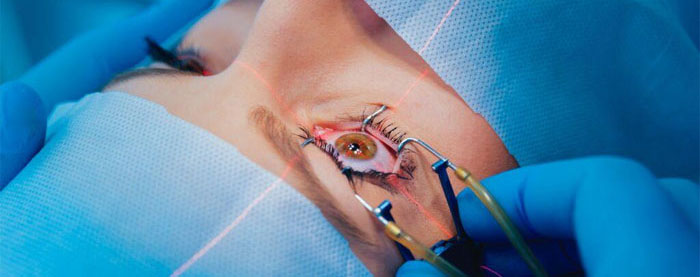Refractive laser Eye Surgery
What is LASIK ?
Lasik or laser-assisted in situ keratomileusis is a type refractive laser eye surgery for the correction of refractive errors such as myopia, hyperopia and astigmatism. The procedure involves reshaping of the cornea, changing its focussing power resulting in improved vision. The procedure may reduce or eliminate the need for spectacles and contact lenses.

What should i know about LASIK?
LASIK is an outpatient microsurgical procedure which does not require hospitalisation. LASIK accurately corrects refractive errors and in most cases eliminate the need for spectacles or contact lenses. However, in some cases, the person might still need correction with spectacles or contact lenses for the residual refractive error.
How does LASIK eye surgery work?
LASIK is a computer-aided procedure that involves ultraviolet rays to reshape the cornea and the procedure takes less than 30 minutes. The procedure essentially involves three steps.
Step 1: A suction ring placed in the eye lifts to prevent the eye from moving. An automated instrument is used to create a thin corneal flap and the corneal flap is lifted and folded back.
Step 2: The excimer laser (using ultraviolet rays), which has been perprogrammed with measurements specifically for the eye, is then centered above the eye.
Step 3: The corneal flap is repositioned and the flap and interface are rinsed and the surgeon waits for 2 to 3 minutes to ensure the corneal flap has reattached fully. Nature affixes the flap rather quickly into its former place and position by means of osmotic pressure. Patient can think normally and the corneal flap remains in position.